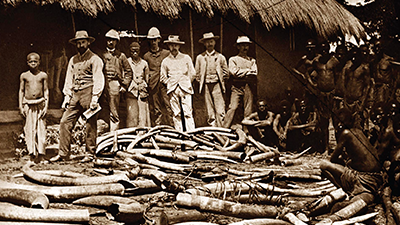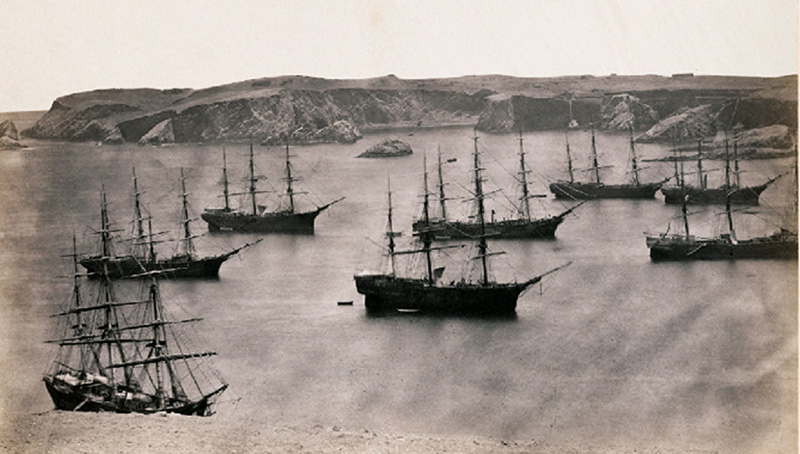Global Economic Development from 1750 to 1900 CE
Teacher Resources
Driving Question: How did the availability of natural resources influence the location and success of industrial economies from 1750 to 1900 CE?
Industrialized countries needed raw materials to power their new factories and populations. This thirst for natural resources led to an economic imperialism that disadvantaged regions producing raw materials, while benefiting those that produced the final goods.
Learning Objectives:
- Explain how various environmental factors contributed to the development of the global economy from 1750 to 1900.
- Use quick sourcing skills to assess the development of the global economy in this period.
Vocab Terms:
- colonialism
- imperialism
- inferiority
- mercenary
- plantation
Opener: Global Economic Development
To teach this lesson step, refer to page 2 of the Lesson 6.4 Teaching Guide.
Help students decode visuals with Three-Step Reading: first the big picture, then the details, then the meaning. Check out page 3 of our Reading Guide for more.
Factories, plantations, and resource extraction could be profitable endeavors. But who actually did the work?
Colonial Violence
To teach this lesson step, refer to page 3 of the Lesson 6.4 Teaching Guide.
Why was colonial conquest so violent? Explore how the process of colonialism impacted communities in such profound ways.
-
Guiding Questions
-
Before you read
Preview the questions below, and then skim the article. Be sure to look at the section headings and any images.
While you read
Look for answers to these questions:
- Henry Morton Stanley’s voyage of exploration in Africa is famous. How does the author characterize it?
- Why was the initial process of taking control of territory through colonialism so violent?
- How did economic goals (production and distribution) lead to violence in colonialism?
- How was violence justified ideologically?
- What, according to Franz Fanon, were some of the psychological effects of colonialism?
After you read
Respond to the following questions:
- To what extent does this article explain how ideologies contributed to the development of imperialism from 1750 to 1900?
- The author rejects the idea that we can ask whether colonialism was “good” or “bad,” and argues that “it’s hard to measure what ‘good’ could have come of it, when weighed against the much heavier physical and psychological suffering it caused”. Do you think he has made his case? Why or why not?
Source Collection: Economic Imperialism and State Expansion
To teach this lesson step, refer to page 4 of the Lesson 6.4 Teaching Guide.
Curious about how other teachers approach sourcing? Look at this Community Forum thread on Sourcing Practice.
Industrialization was the engine that helped drive state expansion. This article will help you find out how. We recommend using the Quick-Sourcing Tool tool to help you analyze these sources.
Closer: Global Economic Development
To teach this lesson step, refer to page 4 of the Lesson 6.4 Teaching Guide.
Reflect on what you know and consider questions you still have.




